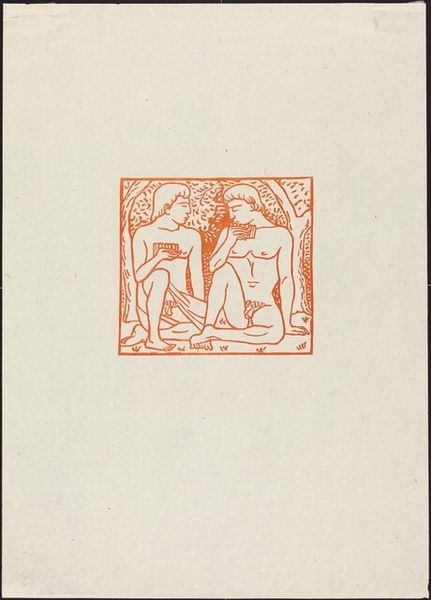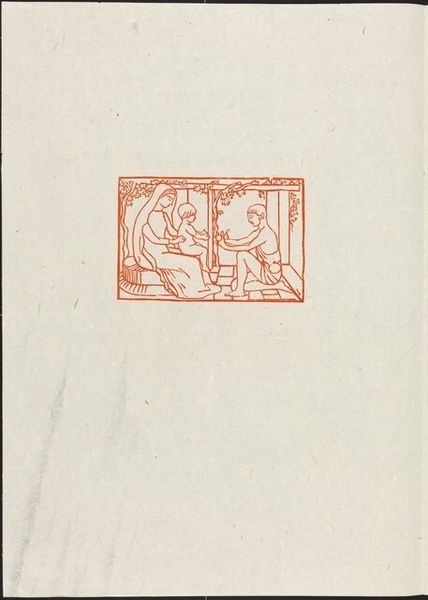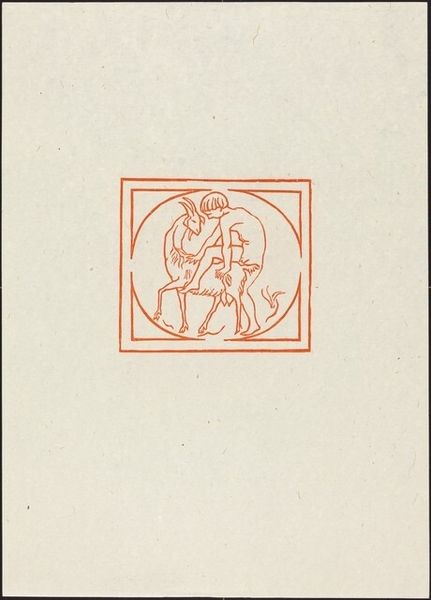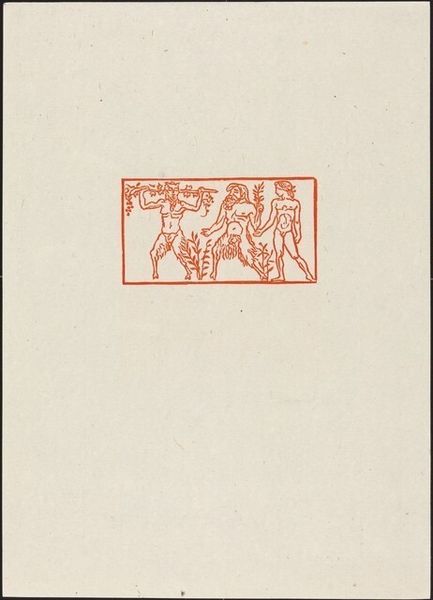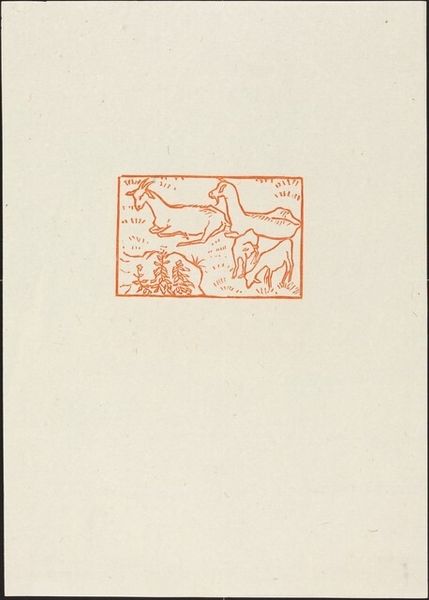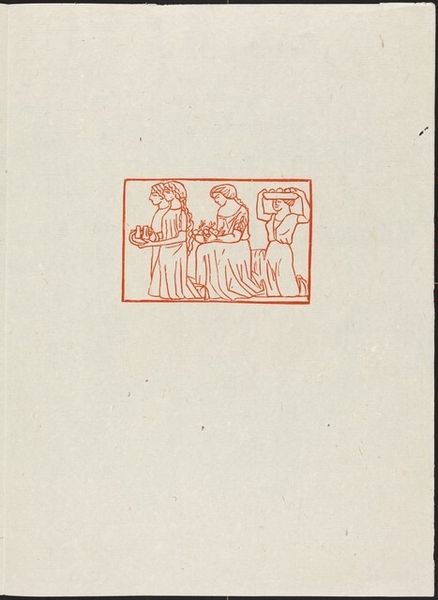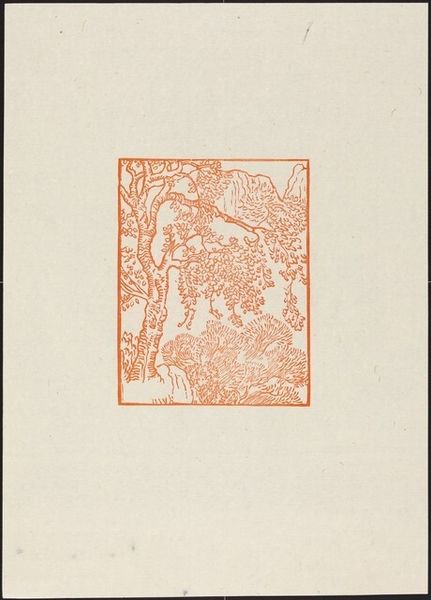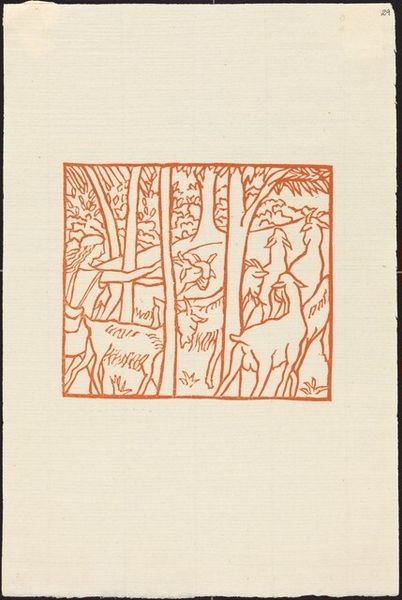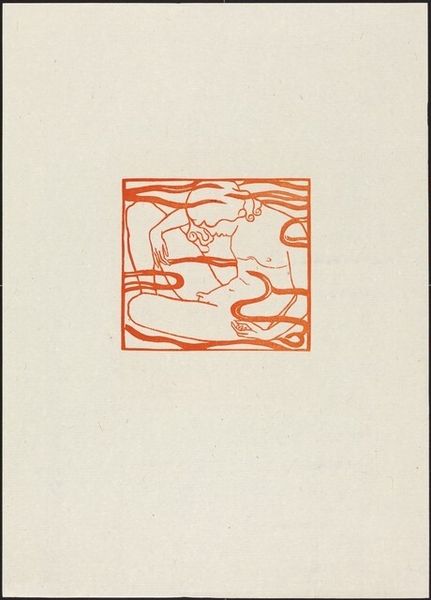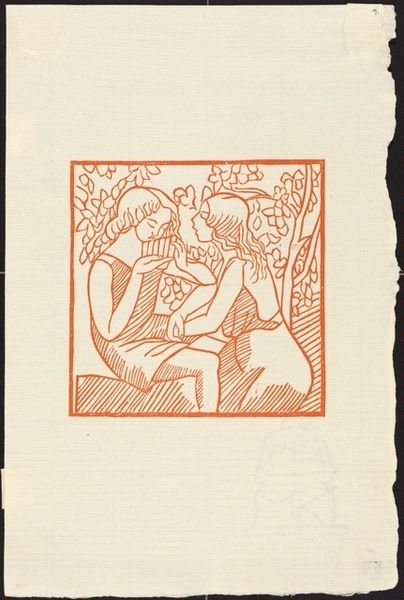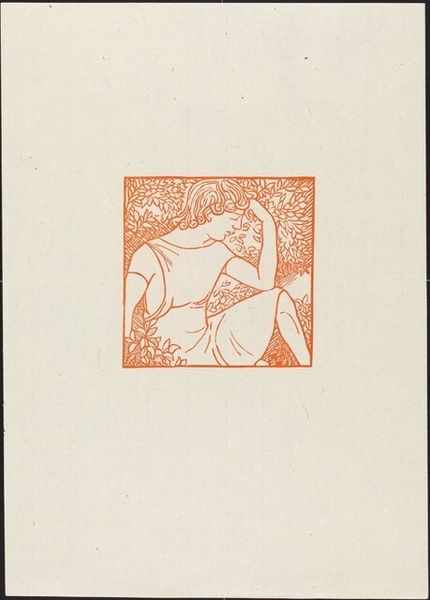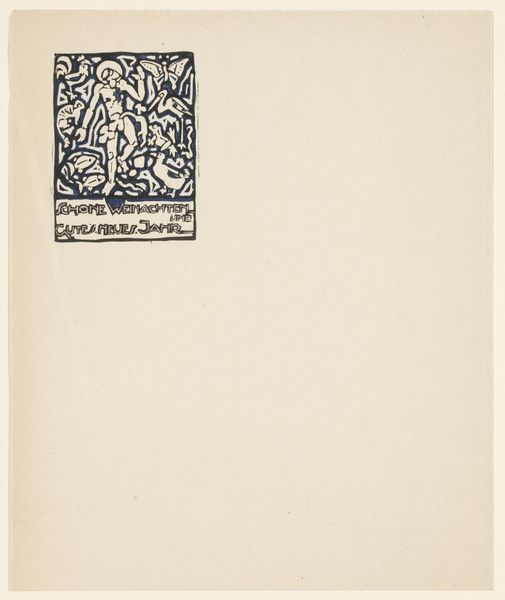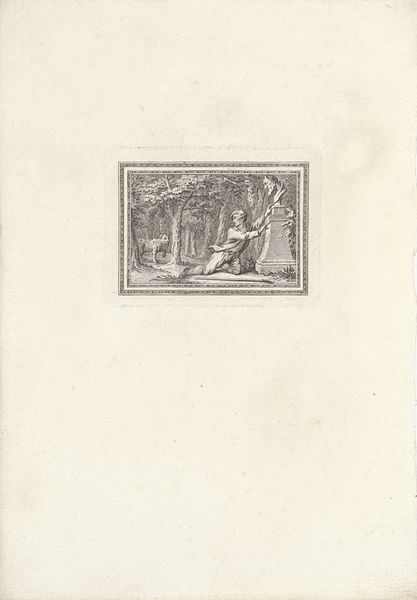
Third Eclogue: Aegon Putting His Flock in Damoetas' Care (En-tete de la troisieme eglogue) Possibly 1926
0:00
0:00
drawing, print, etching, ink
#
drawing
# print
#
etching
#
landscape
#
figuration
#
ink
#
line
#
history-painting
Copyright: National Gallery of Art: CC0 1.0
Curator: Aristide Maillol, likely around 1926, created this piece entitled "Third Eclogue: Aegon Putting His Flock in Damoetas' Care". It’s an etching in ink, presenting a classical scene in a distinct style. Editor: It feels…deliberately archaic. The limited color palette and the almost block-print style give it an impression of something recovered from ancient times. There's a strong linearity and simple rendering of the figures that recalls ancient friezes. Curator: That's perceptive. Maillol, as a sculptor and printmaker, was deeply engaged with classical forms. The linear quality and the medium of etching speak to the printmaking process. Etching allowed for the creation of precise lines. We can almost see his tool moving across the metal plate to create the image before the printing itself takes place and allows reproduction. His return to classical imagery also points towards the nostalgia for pre-industrial life. Editor: So, it's not just the *look* of antiquity but perhaps also reflecting on lost modes of production. I'm intrigued by how he frames different moments of the pastoral exchange separately in this single plane—different moments existing side by side almost like distinct theatrical scenes. There are these two very sensual nude female figures that sharply contrasts the more rigid and draped characters and animals to their right, visually setting apart these panels. Curator: Yes, and let's remember that Maillol came of age artistically amidst shifts towards craft-based practices challenging academic hierarchies. Etchings and prints held a distinct place—a space between mass production and artisanal creation. The potential of producing multiple images allows for broader distribution but remains steeped in the meticulous labor of the hand of the artist. His classical allusions can be read as a reflection on ideas of beauty, labor and simple, perhaps, idealized existence, that is conveyed to wider audiences through reproduced formats. Editor: It definitely prompts us to consider what's being elevated or reclaimed through the material process. I will surely be more attentive to the history of labor as I study artwork that is reproducible! Curator: For me, the engagement with Virgil's pastoral poetry translated to print brings focus on art's capacity to evoke specific moments through the interplay of form, theme and material execution. I leave this understanding richer than when I walked in!
Comments
No comments
Be the first to comment and join the conversation on the ultimate creative platform.
